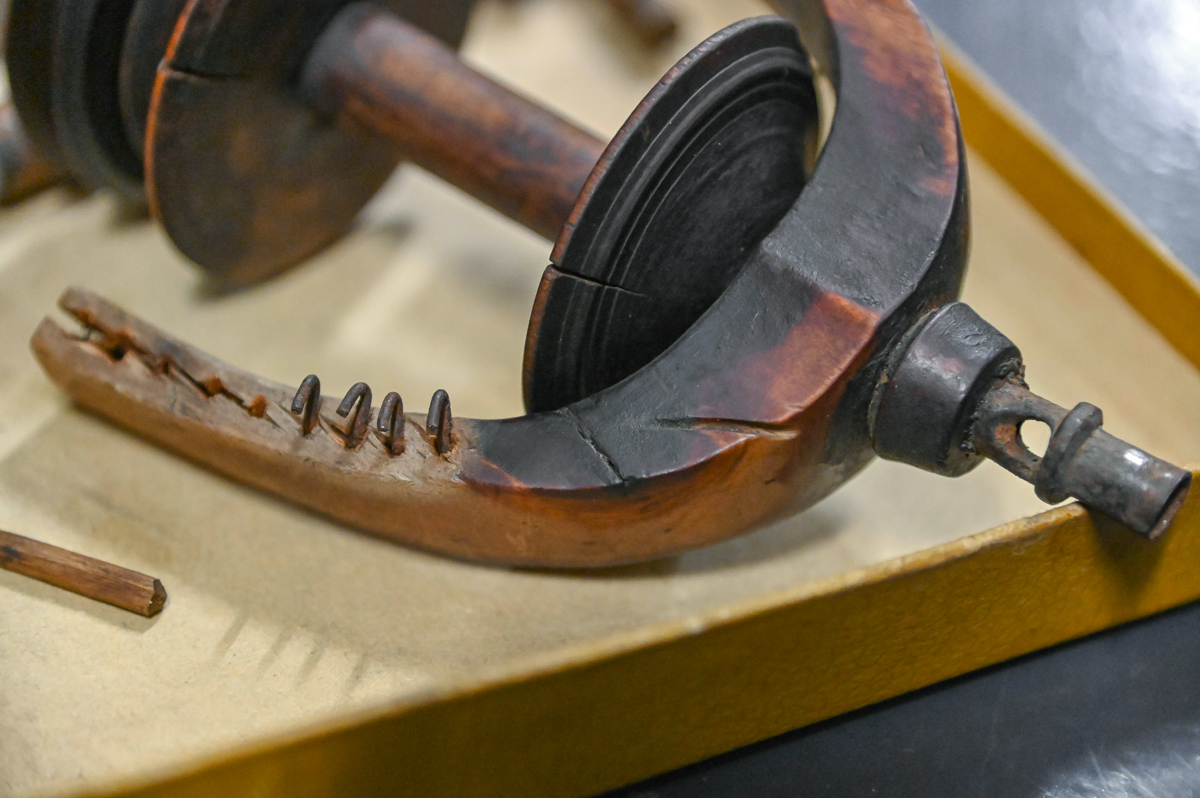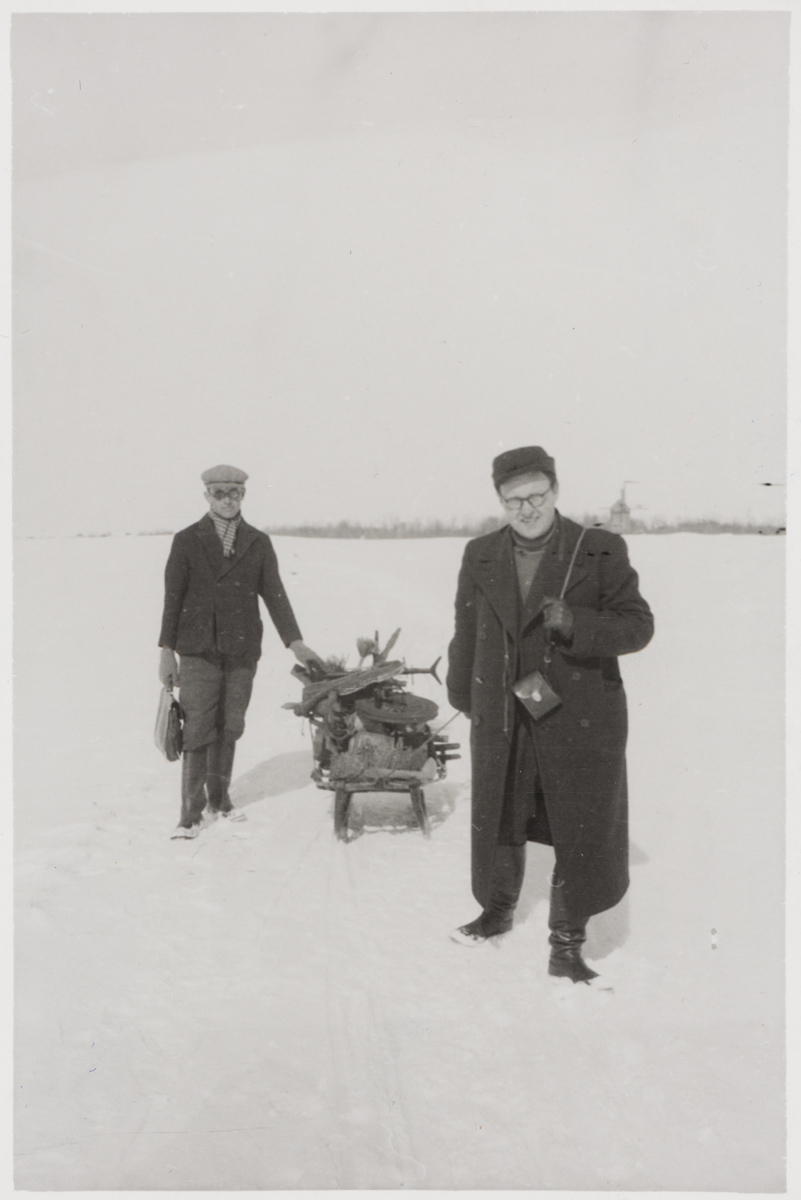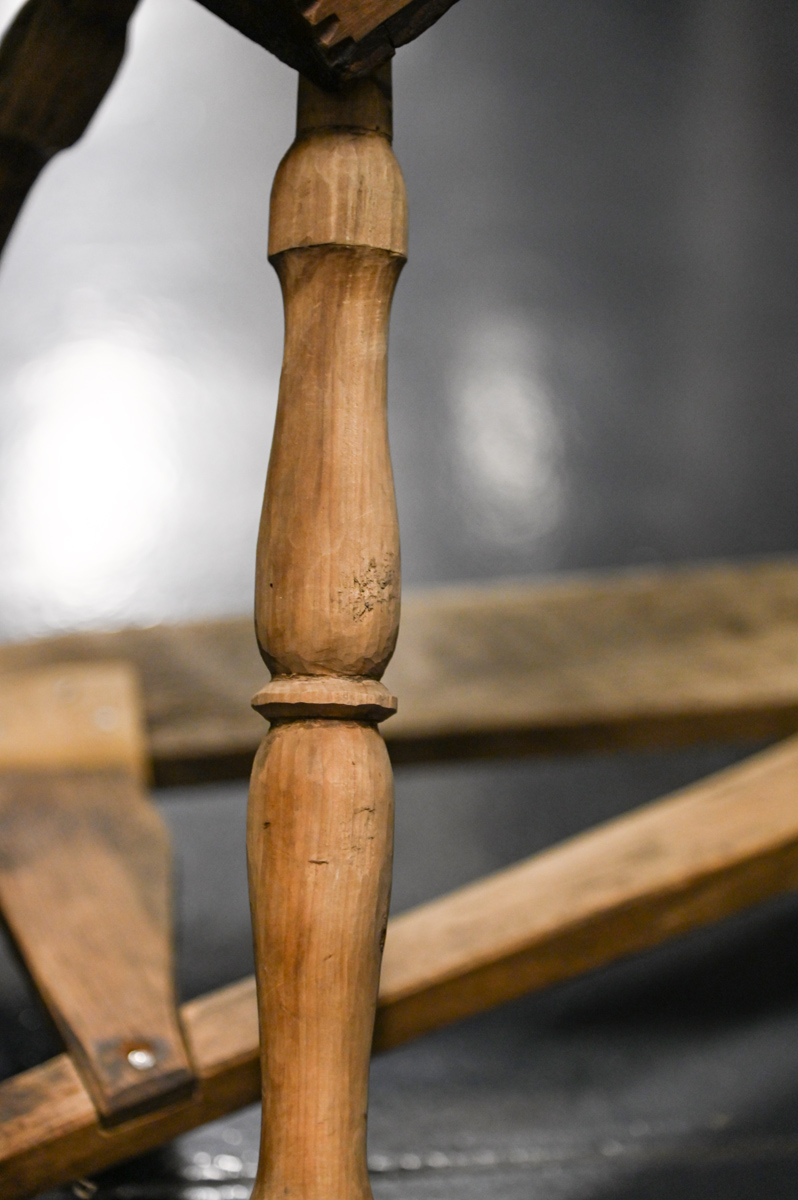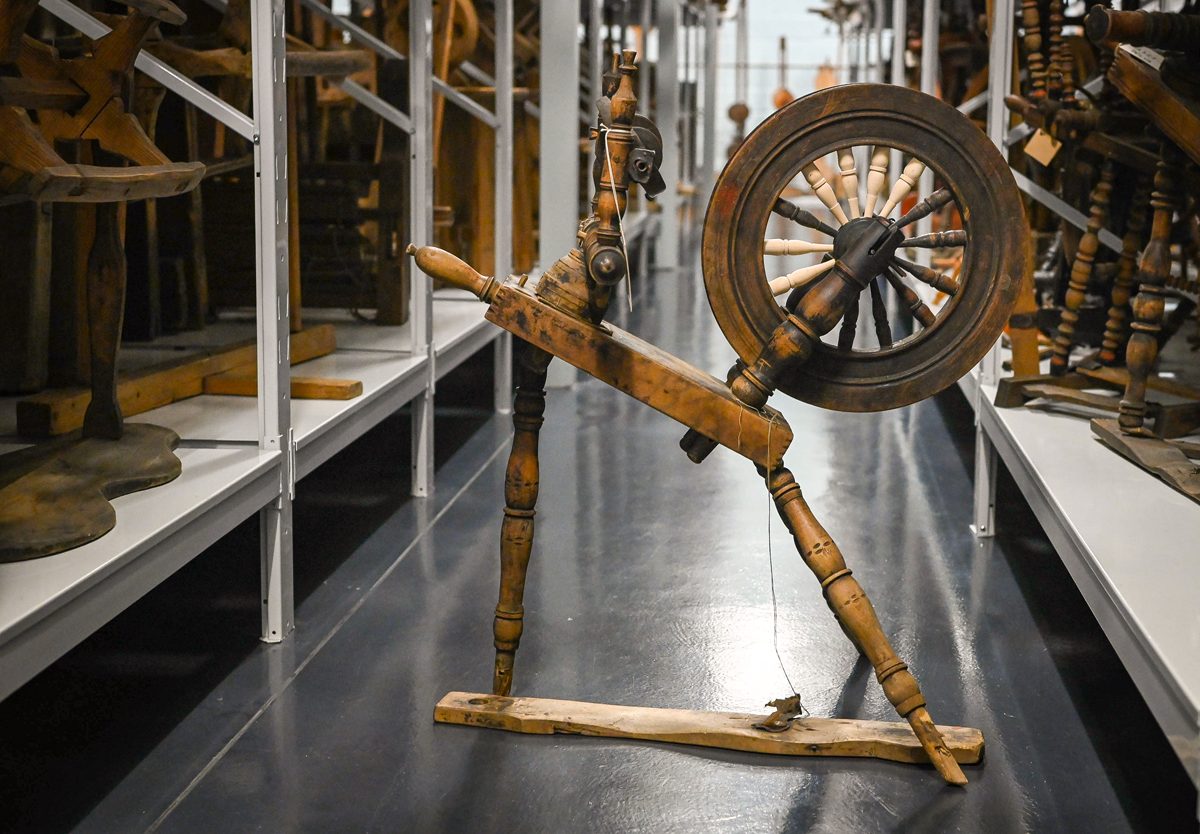Author: Mathilde Frances Lind is a PhD student in the Department of Folklore and Ethnomusicology at Indiana University Bloomington, United States, and an exchange student at the UT Viljandi Culture Academy.
When I first came to Estonia from the United States to do fieldwork for my PhD, I never could have imagined that a global pandemic would occur and change my plans so much. Thankfully, ERM and the open-access digital resources from Estonian archives and museums allowed me to go in a different direction with my project, and the resulting research has opened my eyes to the vital work of ethnologists and museum workers in researching and safeguarding Estonia’s material culture.
I am a folklore student at Indiana University, and I focused in my studies on material culture and museums, with an emphasis on textile crafts. My PhD topic examines the artistic aspects of tools and materials used for making traditional woolen textiles. I am also interested in their connection with ecology through traditional sheep husbandry practices and hand woodworking. I initially worked alongside sheep farmers raising Estonian native sheep for wool and conservation grazing on woodland pastures and coastal meadows, and I took classes at the Viljandi Culture Academy in knitting, weaving, spinning, natural dyeing, embroidery, and felting so that I would have a comprehensive overview of how local wool is used by craftspeople. Many of our classes involved research on museum textiles, and I had also spent a lot of time with the many excellent books on Estonian national costume and traditional handicrafts, which draw heavily from the ERM collections. When covid-19 interrupted my fieldwork plans, it was natural for me to turn to ERM’s collections and archives to continue my work along a slightly different path. I decided to focus on what old textile tools could tell me, and the most interesting to me are spinning wheels.
Spinning yarn is my primary craft, and I have been involved in antique spinning wheel communities in the US and online for about ten years. I knew when I started working with the ERM spinning wheels in the fall of 2020 that there would be a great deal of interest from these communities. There are very few books or online resources that bring together many spinning wheels in one place, so people who want to research them have had to search through archival photos and online museum collections that are scattered in many different places and that often lack identifying information. Through muis.ee, Estonian museums have brought together photographs and information from many different collections, which makes them much more convenient to search, but the language barrier creates significant challenges to people who do not know which search terms to use.
I decided to put together a digital collection of open access resources on Estonian spinning wheels using Omeka.net, a free platform that is used by a wide range of small museums to showcase collections online. Starting with information available on muis.ee and supplementing it with archival images and videos, I began to upload images, link items, and translate texts to English. This work is still ongoing, and I plan to develop a digital exhibit from the data I have uploaded.
I have already had interesting interactions in online spinning groups about the digital collection. For example, one woman in Canada posted to a Facebook spinning group about an antique spinning wheel that she was considering buying. The owner said that family had brought it from Estonia in the early 20th century, and the potential buyer was not sure if this was true or if she should buy it. I recognized it as being identical to a spinning wheel at ERM that was made in Äksi (ERM A 661:105/abcd). The spinning wheel in Canada ended up going home with the woman, who was delighted to have so much information about it and where it may have come from. Another interaction made me laugh — someone in a forum excitedly told me that she had found a great resource on Estonian spinning wheels and had been studying it intently, and of course, it was my site, although she did not know that I was involved in it!
By pulling together this digital information, I can draw conclusions about what kinds of spinning wheels were collected and how they were made and used, but it is also important to test these ideas with examination of the physical objects. During my visits to the ERM collections, I have measured, photographed, and sketched spinning wheels and their parts. It is vital to photograph details, and a zoomed-in photograph can provide information later that may be difficult to see in the low-light conditions of museum storage and exhibition spaces.

Flyer detail with wear from use: cut from thread abrasion during spinning and grease stains from lubricating the moving parts. ERM A 562:201. Photograph by Mathilde Lind.
One of my main interests is in patterns of use that are revealed through physical wear or alterations to the spinning wheels. Spinning wheels are designed to be useful and beautiful both when they are still and when they move with the body of a human operator, but a spinning wheel in the museum is viewed only as a still object without an active user. The signs of wear and details of construction and repairs help us to understand how it looked, acted, and sounded when put into motion and how it interacted with the human form and movements. Since a spinning wheel can be used for many decades or even centuries (the oldest ones that I own and use are from the early 1800s), it has a long time to accumulate those physical changes. The treadle may be worn thin and have a hollow where a spinner’s foot would rest, metal hooks may be sliced in half from the abrasion of linen thread over the years, grease stains show where the moving parts were lubricated, and repairs and alterations show that the spinning wheel was valued enough to be fixed and repurposed even when it was very old and worn out. Many of the spinning wheels in the ERM collections were altered to be used for winding weaving bobbins, so their useful life was extended even after people were no longer using them to make yarn. Some of the alterations and repairs are rough, but many show great care and artistry. One that I find particularly fascinating is a spinning wheel from Suur-Pakri (ERM A 489:233) that has replacement legs and was also altered for winding weaving bobbins. The legs have all the details that one would expect from woodturning with a lathe, but instead they were carefully carved with hand tools, and the subtle flat planes of knife cuts are clearly visible.
Looking more closely at the Suur-Pakri spinning wheels led me to a fascinating story, one that is familiar to those who have read articles by Eevi Astel[1] and Piret Õunapuu[2] about the ERM collecting expeditions of 1940 and the evacuation of museum artifacts in 1944. There are five spinning wheels from the Pakri islands in the ERM collections, and I had wondered why there were so many from such a small coastal Swedish area. After some searching, I learned about the emergency collecting expeditions to Swedish islands just before they were evacuated and taken over by the USSR in 1940. Ethnographers and museum workers rushed to collect the material heritage of these communities before it was destroyed and lost forever, and the collections that resulted are incredible, especially when one considers the very short time they had to do a tremendous amount of work under pressure. We have two photographs (ERM Fk 886:19 and ERM Fk 890:56) of one of these spinning wheels (ERM A 489:232) that were taken during the collection expedition by Gustav Ränk and Eerik Põld.[3] In the photographs, it appears to be in good condition, but the photograph of this spinning wheel on muis.ee shows that the drive wheel had fallen apart at some point after it was taken from Suur-Pakri. Why would that be? It seemed surprising that such dramatic damage could happen to an item in a museum’s care.

Student Eerik Põld and Mr Ihrman with items collected during fieldwork on Suur-Pakri island. Photograph by Gustav Ränk. ERM Fk 886:19
The answer likely lies in another emergency evacuation, this time to protect items from damage and destruction during the war in 1944. Museum workers undertook a heroic effort to move the collections of ERM and other cultural institutions from Tartu into the countryside, and Gustav Ränk, who had collected this spinning wheel from Suur-Pakri, was one of the figures at the center of this effort as well. While I cannot say for sure that this is when the spinning wheel was damaged, an expert spinning wheel restorer in the United States[1] told me that this type of damage is common in spinning wheels today when they are struck or kept under pressure during transport, often when mailing a spinning wheel. The people who evacuated the collections had serious challenges in transporting and storing items under difficult conditions during wartime, but without their efforts, it is possible that this spinning wheel would have been destroyed. Some time after the photograph on muis.ee was taken, the spinning wheel was restored with a combination of original and new spokes. The new spokes match the originals, but the wood is lighter, so it is easy to distinguish the repairs from the original spinning wheel parts. Thus, the repairs stabilize the spinning wheel and allow us to see and analyze its form somewhat as it was when it was collected, but they still reveal the story of what it went through after 1940, which is a key part of the history of this object.
Working on this project has led me to a greater appreciation of the vital role that museum workers play in collecting and taking care of objects. Without their dedication, the items from the Pakri islands likely would have been destroyed when the USSR occupied the islands to build a military base, and their willingness to take risks and successfully carry out a massive evacuation of items and records in WWII under incredibly chaotic and dangerous conditions has directly led to the preservation of most of Estonia’s material heritage that was collected in the early 20th century.
This project has made the stress, disruption, and tragedy during that time feel much more tangible than when I had initially read about 1940s Estonia in history books. My primary source for information on Estonian spinning wheels has been Ella Koern’s 1942 thesis, Lõngavalmistamisest Eestis,[1] and the details of the author’s career and the examples used in the thesis have added texture and depth to my collections research. As an ethnographer and worker at ERM, Ella Koern also participated in the object rescue expeditions of 1940, although she went to Osmussaar, not the Pakri islands.[2] As I read her thesis, I was excited to see that she included two examples from the collections of a type of spinning wheel that I did not think existed in Estonia (“pikk-vokk”) and then was dismayed to find that they were lost or destroyed. Only a few small parts remain, and no other examples have been found. Ella Koern herself fled to Sweden with her family, as did other main figures in this research: Gustav Ränk and the Pakri islanders. The story these spinning wheels have related to me is thus one of many contrasts and emotional turns, including dramatic rescues, restoration, irreparable damage and unrecoverable losses.
This has reaffirmed for me how museum collections research has the potential to uncover amazing stories that are made immediate and tangible through contact with the objects associated with them and through the physical traces of those stories that can be seen on the objects. In one spinning wheel, we can see the story of rural crafts on a small island, the way that a valued tool was used and maintained, the unwilling abandonment of the objects of everyday life in the evacuation of the Pakri islands, collection and conservation by ethnographers, damage from the chaotic events of the 20th century, and repair by caring museum professionals in the post-Soviet era. I am grateful to the staff of ERM both past and present for taking care of these things and for giving me the access and space to work with these objects and learn more about their complex and intriguing histories.
[1] Koern, Ella. 1942. Lõngavalmistamisest Eestis (magistritöö).Tartu Ülikool.
[2] ERM Fk 893:32 shows Koern during this expedition.
[1] Milissa Ellison Dewey, “Bobbin Boy” spinning wheel restoration service, Asheville NCC USA. Personal communication, 29 April 2021.
[1] Astel, Eevi. Eesti Rahva Muuseumi kogud 1940–1953. Eesti Rahva Muuseumi Aastaraamat XLI, 1996, 41–63.
[2] Õunapuu, Piret. Ühe rahva kultuuri lõpp etnograafi silmade all. ERMi
päästeekspeditsioonid rannarootslaste aladele 1940. aastal. Eesti Rahva Muuseumi Aastaraamat XLVI, 2002, 81–100.
[3] I first learned about this through an ERM blog post: https://blog.erm.ee/?p=4897




